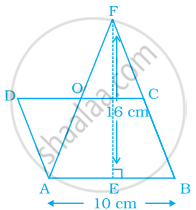Advertisements
Advertisements
Question
The base of the parallelogram is 16 cm and the height is 7 cm less than its base. Find the area of the parallelogram
Solution
In a parallelogram
Given base b = 16 cm, height h = base – 7 cm
= 16 – 7
= 9 cm
Area of the parallelogram = (base × height) sq.units
= 16 × 9 cm2
= 144 cm2
Area of the parallelogram = 144 cm2
APPEARS IN
RELATED QUESTIONS
Find the area of the following parallelogram:
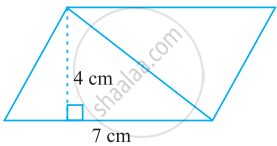
DL and BM are the heights on sides AB and AD respectively of parallelogram ABCD (see the given figure). If the area of the parallelogram is 1470 cm2, AB = 35 cm and AD = 49 cm, find the length of BM and DL.
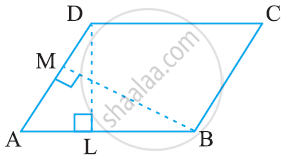
Area of a parallelogram is 83.2 sq cm. If its height is 6.4 cm, find the length of its base.
Find the height ‘x’ if the area of the parallelogram is 24 cm2 and the base is 4 cm.
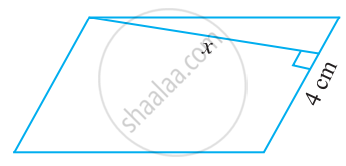
Find the missing values.
| Base | Height | Area |
| 17 mm | 221 sq.mm |
What happens to the area of the parallelogram if the base is increased 2 times and the height is halved?
If the base and height of a parallelogram are in the ratio 7 : 3 and the height is 45 cm, then fixed the area of the parallelogram
Ratio of area of ∆MNO to the area of parallelogram MNOP in the same figure is ______.
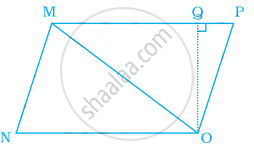
In the given figure, area of parallelogram BCEF is ________ cm2 where ACDF is a rectangle.
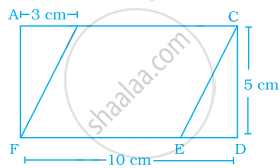
In the given figure, area of ∆AFB is equal to the area of parallelogram ABCD. If altitude EF is 16 cm long, find the altitude of the parallelogram to the base AB of length 10 cm. What is the area of ∆DAO, where O is the midpoint of DC?
